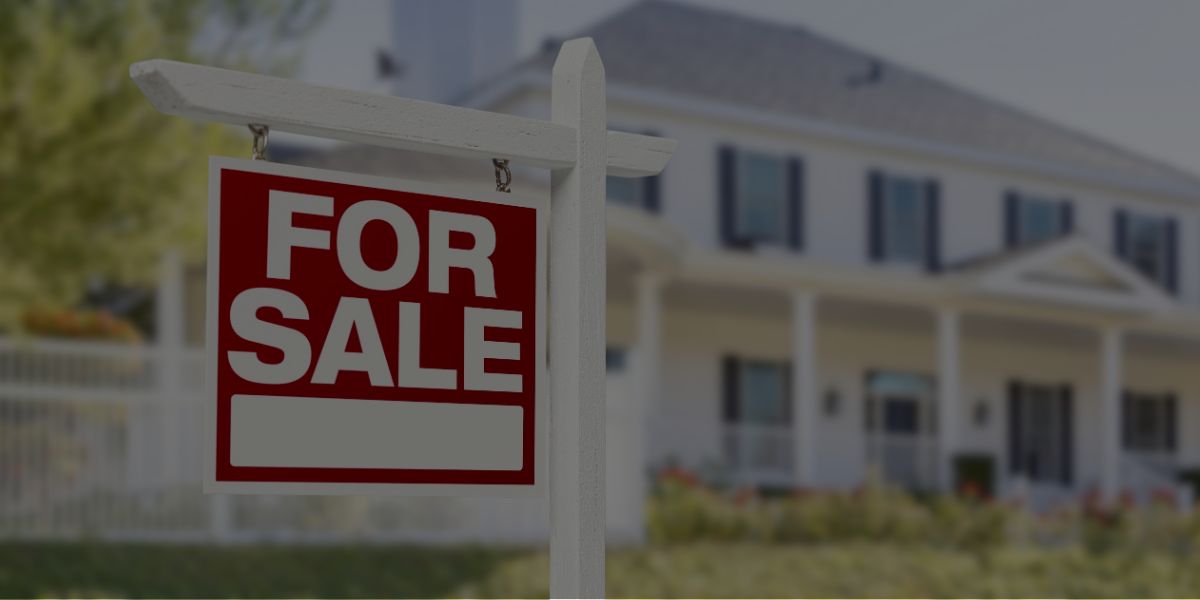It’s no secret that home staging is key to a successful sale. In fact, statistics show that staged homes spend 73% less time on the market than unstaged homes. Furthermore, homes that are well-staged can increase the sale price by an average of 20% compared to homes that are not staged. But on the flipside, this means that making the WRONG home staging mistakes can be costly and do the opposite of helping you sell your home.
So, what are the biggest home staging mistakes to avoid? We’ve compiled a list of 25 of them for you here. Plus, we’ll also touch on 10 additional mistakes to avoid making if YOU are the professional home stager!
Keep reading to discover what they are!
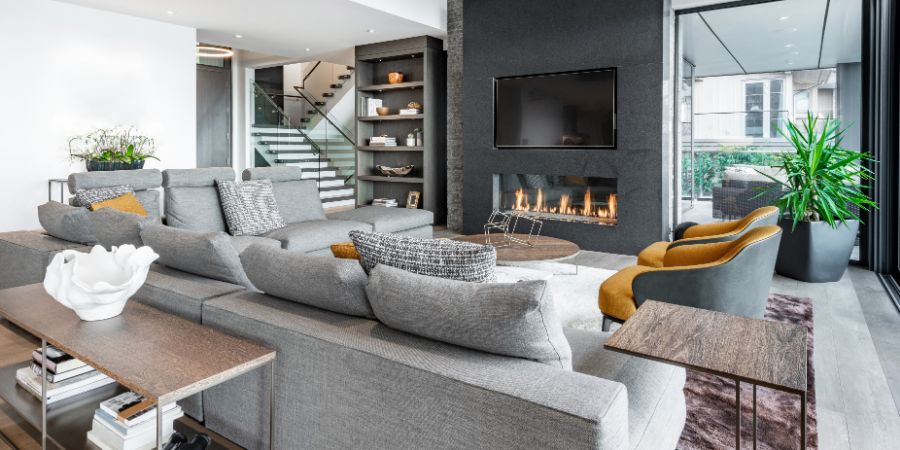
Why Home Staging Will Improve The Sale of Your Home
When it comes to successfully selling a house, home staging is essential. Home staging is the process of preparing an interior living space for sale in order to make it more attractive and appealing to potential buyers.
Home stagers typically focus on creating a warm, inviting atmosphere that will draw potential buyers in and help them visualize themselves living in the home. What’s more – home staging can also help to emphasize the best features of a property, while downplaying any potential drawbacks.
Here are just some of the ways that getting your home professionally staged will help improve the sale:
- Create a lasting impression on potential buyers
- Make the space more inviting and appealing
- Help to highlight the best features of your property
- Make the space look larger and more open
- Draw attention to any stylish design elements within the property
Moreover, here are some of the ways that home staging is proven to better your results on the real estate market:
- A staged home will increase the selling price of your home
- It’ll also decrease the amount of time it takes to sell your home
- Staging your home will help attract more buyers and viewings
- Plus, it’ll make your home stand out from other listings in the area
These days, home staging is increasingly becoming a standard practice in real estate… And it’s not hard to see why!
Interested in an exciting career as a professional home stager? Learn how to become one in as little as 3 short months – even if you have no experience!
25 Home Staging Mistakes That’ll Hurt Your Chances of Selling
When it comes to home staging mistakes, there are several that you should be aware of and avoid. From poor furniture placement to incorrect color choices, here are 25 of the biggest home staging mistakes to avoid when selling your house…
Mistake #1: Not Decluttering Your Home
Home buyers don’t want to be overwhelmed by your furniture and belongings. It’s important that you declutter your home before you put it up for sale so that potential buyers can get an idea of the space and how they would use it themselves.
PRO TIP: Here are 7 things you need to declutter right now!
Mistake #2: Not Cleaning Your Home
A dirty house is a huge turn-off for potential buyers. No matter how great the layout or design of your home is, if it’s not clean, people won’t want to buy it. So, make sure you give your home a thorough cleaning before you start staging!
Mistake 3: Poor Furniture Placement
Having too much furniture in a room can make it look cluttered and disorganized. When staging a room, make sure you organize the furniture in a way that will maximize the space and make it look inviting!
If you need some help placing your furniture correctly, Better Homes & Gardens offers 26 tips for placing furniture in the best way possible – for every room!
Mistake 4: Not Including Home Accents
Home accents are essential when staging a home as they help to add character and style to each room. For this reason, make sure you include some decorative items like pillows, rugs, candles, and artwork to give your home that extra touch of warmth.
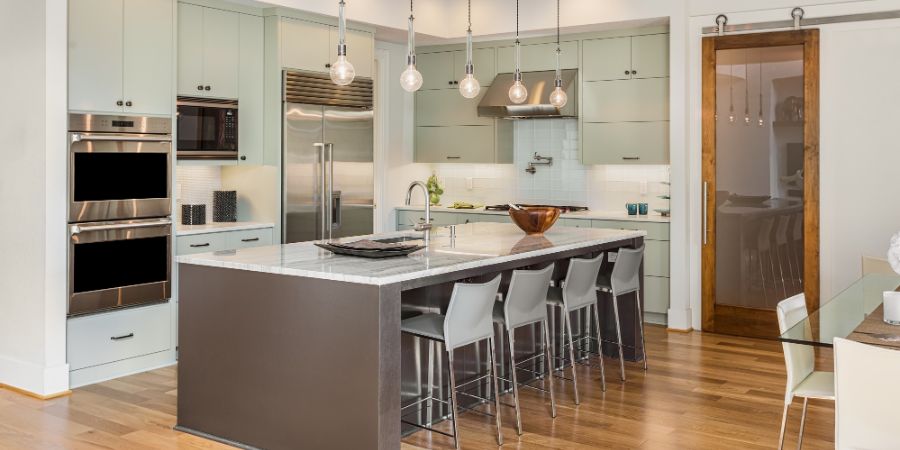
Mistake #5: Not Considering How Your Home Will Photograph
When staging a home, you want to make sure that it looks just as good in photos as it does in person. Home buyers often first see the listing for the house online, so you want to ensure that everything looks its best! To do this, bring in natural lighting by opening curtains and blinds and moving furniture away from walls.
If you need some help with this, here are 8 tips for taking better pics of your home (courtesy of Apartment Therapy)!
Mistake #6: Picking The Wrong Paint Colors
When staging your house, it’s important to pick the right colors. After all, color psychology plays a HUGE role in the selling of a home!
As a rule of thumb, neutral colors are often the best option as they can help make a space look larger and more inviting. In contrast, try to avoid dark or bold colors as these can make a room look smaller than it actually is.
Mistake #7: Not Setting The Right Mood
Home staging isn’t just about the furniture and decorations – it’s also about setting the right mood. Home buyers are looking for a cozy, welcoming atmosphere. So, you want to make sure that your home conveys this in order to attract potential buyers!
To do this, use scented candles or lighting to create an inviting environment. You can also add small touches like books or plants to give the space a lived-in feel.
Mistake #8: Your Home Lacks Any Sort Of Design Theme
It’s important to make sure that your home has a cohesive design when staging it. Home buyers want to be able to visualize themselves in the space and how they would use it, so having a well-thought out design can help them do this. To create a theme, try mixing and matching different pieces of furniture and adding coordinating color accents!
Not sure what your preferred style is? Here are 6 common (and popular) design styles that may interest you!
Mistake #9: Not Enough Depersonalization
Depersonalization is CRITICAL for selling your home! In a nutshell, this refers to the process of removing personal items such as photographs, trophies, etc. from your home in order to give potential buyers a sense of what their own belongings would look like in the space!
Why will this help you sell your home?
Well, it creates a blank canvas for home buyers to imagine themselves living in the space without any distractions. It’s also important to note that depersonalization can also help to make a space look more inviting and open!
Mistake #10: Too Much Depersonalization
There is a flipside to this, though… Home buyers also don’t want a house that looks too impersonal and sterile. While it’s important to remove personal items, you should still keep some things that add character and make the home feel warm and inviting. For example, throw blankets or books on the coffee table can make all the difference!
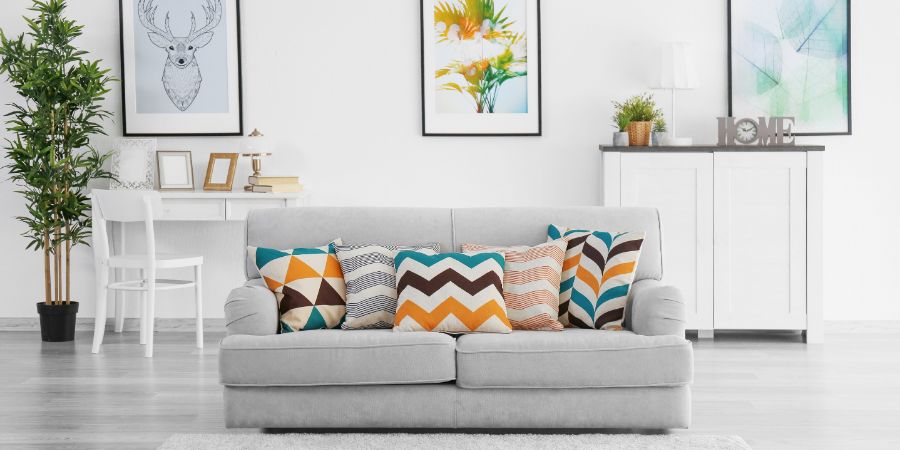
Mistake #11: You Go With What’s Currently Trending
This mistake may surprise you, because it seems like a no-brainer to go with what’s popular when staging a home. However, it’s important to remember that trends come and go. So, if you want your home to be timeless, opt for more classic furnishings.
That way, the potential buyer can easily envision their own furniture in the space without worrying about updating it with the latest trends!
Mistake #12: Your Home Doesn’t Have Any Area Rugs
Area rugs can really tie a room together and make it look more finished – especially in rooms that have a lot of open space. Not only that, but they can also help to define the different areas in an open floor plan! Plus, they provide a great way to add color and texture to your home without overwhelming it.
So, if you’re looking for an easy way to spruce up a room, don’t forget to add an area rug!
Mistake #13: You Don’t Show Off Your Home’s Best Features
Home staging isn’t just about making a house look nice – it’s also about showcasing its best features. For example, if you have a great view or hardwood floors, make sure to highlight these features by rearranging the furniture or displaying them in a way that will draw the buyer’s eye.
Remember: home buyers want to see the best of what your house has to offer! They should be able to easily see why your house is special and why it stands out from the other houses on the market! So, take the time to highlight its features and make them shine.
Mistake #14: Your Artwork is Hanging Too High (Or Too Low)
Artwork is a great way to add color and personality to your home, but it’s important to make sure that it’s hung correctly! The general rule of thumb is to hang artwork at eye level – too low or too high can make the room feel off-balance.
So, take a step back from your artwork and look at it from different angles. You want to make sure that it’s hung at the right height so that it enhances the overall look and feel of your home!
Mistake #15: Your Wall Paint Hasn’t Been Refreshed/Updated
As we mentioned earlier, the right paint color can really transform a room. However, if it’s outdated or chipped then it’s time to refresh! Home buyers are looking for houses that look updated and well-maintained, so make sure to freshen up your wall paint before you put the house on the market.
This is also the perfect time to consider adding a new paint color to the walls. For example, if you have dark blue or gray walls, go for something lighter and brighter like beige or white. This can open up the space and make it look bigger – which is always a plus for home buyers!
Mistake #16: You’re Using Too Much Decor and Knick-Knacks
While decor pieces can add a nice touch to a room, it’s important not to overload the space with too many of them. Home buyers want to be able to imagine themselves in the house, and that can be difficult if there is too much going on!
So, make sure to keep your decor simple and minimalistic. That way, buyers can envision what their own furniture and belongings will look like in the space!
PRO TIP: Become a certified interior decorator with the help of QC Design School‘s self-paced, online Interior Decorating Course!
Mistake #17: You’re Not Paying Attention to Home Fragrance
Your home should not only look nice, but it should also smell good! Home buyers will be instantly turned off if your house has an unpleasant odor.
So, make sure to pay attention to the fragrances in your home! Choose something light and pleasant like citrus or lavender. This will help create a cozy atmosphere that potential buyers can’t resist!
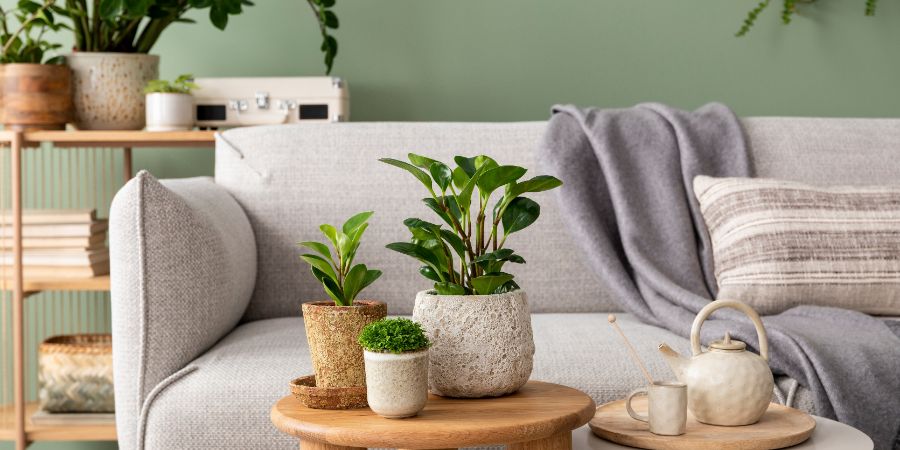
Mistake #18: You’re Not Showing Home Buyers How Flexible the Space Is
When staging a home, it’s important to show potential buyers that the space is versatile and can accommodate their needs. So, take some time to rearrange the furniture and decor pieces in different ways. This will show buyers that they have plenty of options when it comes to making the house their own.
Also, make sure to leave some empty space in each room. Home buyers will be able to visualize how their own furniture or decorations can fill up the space – and that’s a big plus for them!
Mistake #19: Lighting Wasn’t Made a Priority
Good lighting can make all the difference in a room. Home buyers want to be able to clearly see what they’re buying, and that will be difficult if there is not enough light in the house.
So, make sure that you focus on making your home well-lit! Add extra lamps or replace any dim light bulbs with brighter ones. This will help illuminate the space and make it look more inviting.
Mistake #20: There Are Too Many Focal Points In a Single Room
Your home should be attention-grabbing, but not over-the-top. Home buyers will be overwhelmed if there are too many focal points in a single room.
So, try to limit yourself to one or two standout pieces per room. This will help create a balanced look in your space – and that’s exactly what potential buyers are looking for!
Mistake #21: Your Entryway Isn’t Making a Strong First Impression
The entryway is the first thing that home buyers will see when they enter your home, so make sure it makes a strong impression!
Here are some ways your entryway can make a positive statement:
- Add some colorful plants
- Hang a statement wall art piece
- Put thought into the furniture pieces you choose
Home buyers will be instantly drawn in if your entryway looks inviting and welcoming. And if you need a bit more help, MHM Professional Staging, LLC, offers these helpful tips for staging your front entrance!
Mistake #22: Your Storage Areas Aren’t Also Staged
When staging a home, it’s easy to forget about storage areas like closets and cupboards. But these are important parts of the house – they will give buyers an idea of how much storage space is available in the home.
So, make sure that your storage spaces look neat and organized. Put away any clutter, add some baskets for extra storage, and even add a few decorative items to give the space some personality! This will help buyers feel more at ease when it comes to looking at the home.
Mistake #23: You Didn’t Consider Your Backyard
The landscape design of your yard is just as important as the interior design of your house. Home buyers will be looking for an outdoor space that is inviting and well-maintained.
So, take some time to spruce up your backyard! Add some potted plants or small trees, and add a few pieces of furniture if possible. This will help create a pleasant atmosphere that will definitely draw buyers in!
PRO TIP: New to landscape design? This Beginner’s Guide breaks down EVERYTHING you need to know to get started!
Mistake #24: Your Home Has Little To No Curb Appeal
Full stop: your home’s exterior is just as important as the interior. The reality is, home buyers are more likely to be interested if they’re drawn in by a nice-looking house.
So, make sure that your house has good curb appeal! This can mean anything from added landscaping elements to painting the front door a bright color. Whatever you do, make sure the outside of your house looks just as inviting as the inside.
PRO TIP: Learn more about why curb appeal is critical to selling your home!
Mistake #25: You Didn’t Hire a Professional Home Stager
No matter how hard you try, you may not know all the tricks of the trade when it comes to home staging. That’s why it’s important to hire a professional home stager!
A professional will be able to step in and assess your space and make recommendations that will maximize its potential. Home stagers have an eye for what works and what doesn’t, and they can help you make the most of your space.
So, don’t be afraid to ask for help! Home stagers have a lot to offer – and can often save you time, money, and hassle in the long run.
Alternately, why not get yourself trained and certified as a professional home stager yourself? QC Design School’s self-paced, online Home Staging Course can turn YOU into an International Staging and Redesign Professional (ISRP) in as little as 12 short weeks!
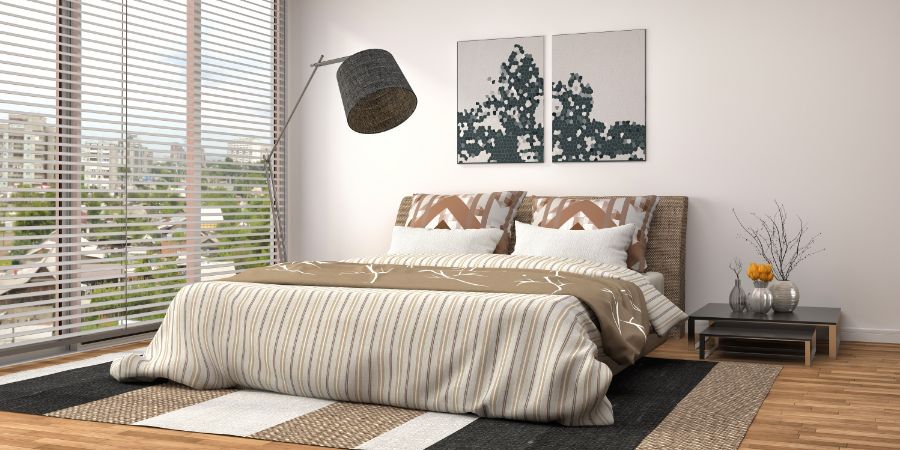
9 Common Mistakes To Avoid As a Home Stager
Okay, now let’s consider that YOU are the home stager! Home staging is a creative endeavor, and it can be easy to make mistakes. In addition to the 25 mistakes we just covered, here are 9 additional ones that YOU should specifically avoid as the industry expert:
1. Not paying attention to the target market
As a home stager, it’s important to know who the target buyers are and what they’re looking for. For example, the target market for your client’s home may be young professionals – so, it’s important to make sure the staging is tailored for them.
If you’re not sure how to determine your client’s target demographic, here are some quick tips to help guide you on the right track:
- Start by looking at the location of the home and what type of people live in that area.
- Ask your client how they want their home to be presented, and what they think potential buyers will respond well to.
- Research the average age of home buyers in that area – this can help you determine what type of furniture, colors, and decorations to use.
2. Not understanding the home seller’s needs
It’s also important to understand your client’s needs, wants, and expectations. Home sellers can have a particular vision for how they want their home to be presented – and you should work hard to make sure that you meet those standards.
For instance, perhaps your clients want to focus on the modern features of their home – if that’s the case, make sure you use furniture and decorations that emphasize those elements!
So, take the time to sit down with the home seller and ask them questions about what they would like to be included in the home staging. This will help ensure that you are both on the same page – and it will make your job a lot easier!
3. Not assessing the space
Each room needs to be assessed before it is staged – this means taking measurements and considering how furniture will look from every angle in the room. Home stagers should also pay attention to the flow of the space and make sure that furniture is arranged in a way that makes sense.
For example, if you’re staging a living room, make sure that the furniture creates an inviting atmosphere for potential buyers. This includes leaving enough space for people to walk around, avoiding overcrowding the space with too many pieces of furniture, and making sure that everything looks balanced.
4. Disregarding your client’s budget
It can be easy to get carried away when home staging – but you should always keep your client’s budget in mind. Home stagers should work with the seller to develop a plan that fits within their budget, and find ways to make the most of their money.
For example, you could recommend using items from around the house or suggest renting furniture instead of buying new items. This will help ensure that your client is happy with the outcome, and it can also save them money in the long run.
5. Having no idea how to work with a real estate agent
Real estate agents play a big role in the home selling process, so it’s important that home stagers understand how to work with them. Home stagers should take the time to get to know the real estate agent and learn what they look for when staging a house.
This will help ensure that you’re on the same page as the real estate agent and can help create a smooth transition from staging to selling. Home stagers should also be sure to communicate with the real estate agent regularly and be sure to keep them updated on any changes or updates to the staging.
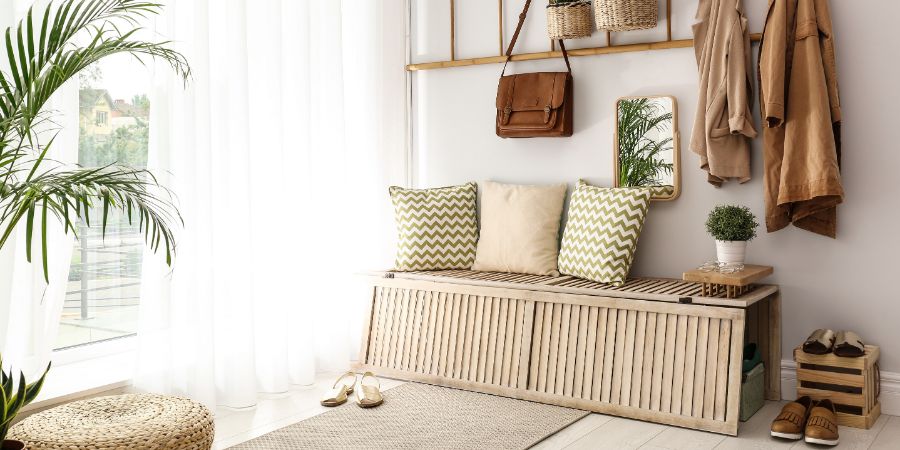
6. Not using the right colors and textures
Choosing the right colors and textures for a home can make or break its success. Home stagers should consider the overall style of the home and use colors that complement this look. Home stagers should also pay attention to how different textures can help create a more inviting atmosphere.
For example, adding in some textured rugs or pillows can really bring a room together and make it feel warm and inviting. Home stagers should be sure to use colors and textures that will make potential buyers feel at home.
7. Not utilizing the outdoors to their full advantage
The outdoors can be an important selling point for any home. So, it’s important that home stagers take the time to spruce up the outdoor areas. Home stagers should make sure that these areas are well-maintained and that they create a warm, inviting atmosphere.
This could include adding in some plants or flowers, creating a seating area, or making sure the deck is in good condition. Home stagers should also make sure that these areas are clean and clutter-free – this will show buyers that the home is well cared for and ready for them to move in.
8. Going into the home staging process without a game plan
It’s important that home stagers have a plan before they start staging a house. Home stagers should take the time to come up with a plan that fits within their client’s budget and timeline. Home stagers should also consider what features of the house can be highlighted and make sure that these are included in the staging.
Having a plan in place will help ensure that home stagers stay on track and can get the job done quickly and efficiently. Home stagers should also make sure that they are able to adjust their plan if needed and be open to suggestions from the real estate agent or home owner.
9. Not being professionally trained as a home stager
Home staging can be a complex job, so it’s important that home stagers have the right training. For this reason, aspiring and working home stagers alike should seek out a professional certification program in order to help them understand what needs to be done when staging a house.
Having this knowledge will make home stagers more efficient and ensure that they are able to present a home in the best way possible. Home stagers should also consider taking additional classes and seminars to stay up to date on the latest trends in home staging.
PRO TIP: Find the PERFECT home staging school for you in just 5 easy steps!
What Should You Not Do When Staging a House: Final Thoughts
Phew, that was quite the list! These 25 home staging mistakes are definitely not the only ones out there, but they can be some of the most damaging. Furthermore, home stagers should take the time to understand what not to do when staging a house in order to ensure that their clients get the best results possible.
Home stagers should also consider staying up to date on trends and taking additional classes or seminars to stay ahead of the game. Ultimately, home staging is an undeniably important part of the home selling process. Thus, it’s important that home stagers take all the necessary steps in order to make sure it goes as smoothly as possible.
By avoiding these 25 mistakes (as well as the 9 extra mistakes professional home stagers need to avoid), you can make sure to give yourself the best chance of selling your house!
Thanks for reading – and we wish you the best of luck!

